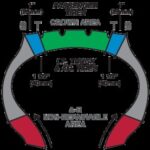Maintaining your Club Car golf cart is essential for optimal performance and longevity. Like modern cars, Club Car golf carts have onboard computer systems that can provide valuable insights into their health. Reading diagnostic codes is a crucial skill for any Club Car owner, allowing you to identify and address potential issues efficiently. This guide will walk you through the steps on how to read Club Car diagnostic codes, empowering you to keep your golf cart running smoothly.
What You’ll Need to Read Diagnostic Codes
Before you begin, gather the necessary tools:
- Your Club Car Golf Cart: This guide is focused on Club Car models. While general principles may apply, specific port locations and compatibility might vary across brands.
- OBD-II Scanner: You’ll need an OBD-II (On-Board Diagnostics II) scanner. These scanners are readily available online and at auto parts stores. Ensure it’s compatible with electric vehicles, as some basic scanners are designed primarily for gasoline engines.
Locating the Diagnostic Port on Your Club Car
The first step is to find the diagnostic port on your Club Car. The location can vary slightly depending on the model and year, but common locations include:
- Underneath the Driver’s Seat: This is a frequent location. You may need to lift or remove the seat to access the port.
- Under the Dashboard or Steering Column: Check the area beneath the dashboard, near the steering column. You might need to remove a small access panel to reveal the port.
- Front Storage Compartment: In some models, the port may be located in the front storage compartment.
The diagnostic port is usually a 16-pin connector, similar to those found in cars. Refer to your Club Car owner’s manual for the exact location if you’re unsure.
Connecting Your OBD-II Scanner
Once you’ve located the diagnostic port, follow these steps to connect your OBD-II scanner:
- Turn Off the Golf Cart: Ensure the golf cart is completely turned off before connecting the scanner.
- Plug in the OBD-II Scanner: Carefully plug the OBD-II scanner into the diagnostic port. Make sure it’s securely connected.
- Turn the Ignition to “On” (Without Starting the Motor): Turn the golf cart key to the “on” position. This will power up the computer system without engaging the motor.
- Power On the Scanner: Turn on your OBD-II scanner. It should automatically begin to communicate with the golf cart’s computer.
Reading and Understanding Diagnostic Codes
After connecting the scanner, navigate its menu to find the “Read Codes” or “Diagnostic Codes” option. The scanner will then retrieve and display any stored error codes from the golf cart’s computer.
- Error Code Format: OBD-II codes are typically five-character alphanumeric codes. For example, a code might look like “P0123”.
- Code Meaning: These codes correspond to specific issues within the golf cart system. Your scanner may provide a brief description of the code.
- Further Research: For a detailed understanding of a specific code, you can use online resources or consult an OBD-II code database. Websites and apps dedicated to OBD-II codes can offer in-depth explanations and troubleshooting tips.
The information you obtain from these codes can range from minor sensor issues to more significant problems with the motor, battery system, or controller.
When to Consult a Professional
While reading diagnostic codes is helpful, there are situations where professional assistance is recommended:
- Older Golf Carts: Some older Club Car models may not be fully OBD-II compliant or might use proprietary diagnostic systems.
- Incompatible Scanner: If your scanner fails to connect or read codes, it might be incompatible with your golf cart model.
- Complex Issues: If you’re unsure how to interpret the codes or address the underlying problems, it’s best to consult a qualified golf cart technician.
- No Codes Present but Performance Issues: Sometimes, performance problems might not trigger error codes. A professional technician can perform more in-depth diagnostics.
Conclusion
Learning how to read Club Car diagnostic codes is a valuable skill for any owner. It allows you to proactively monitor your golf cart’s health, identify potential issues early, and make informed decisions about maintenance and repairs. By following these steps, you can take a more hands-on approach to caring for your Club Car and ensure it remains in top condition for years to come. Regular diagnostic checks can save you time and money in the long run by preventing minor issues from escalating into major repairs.

